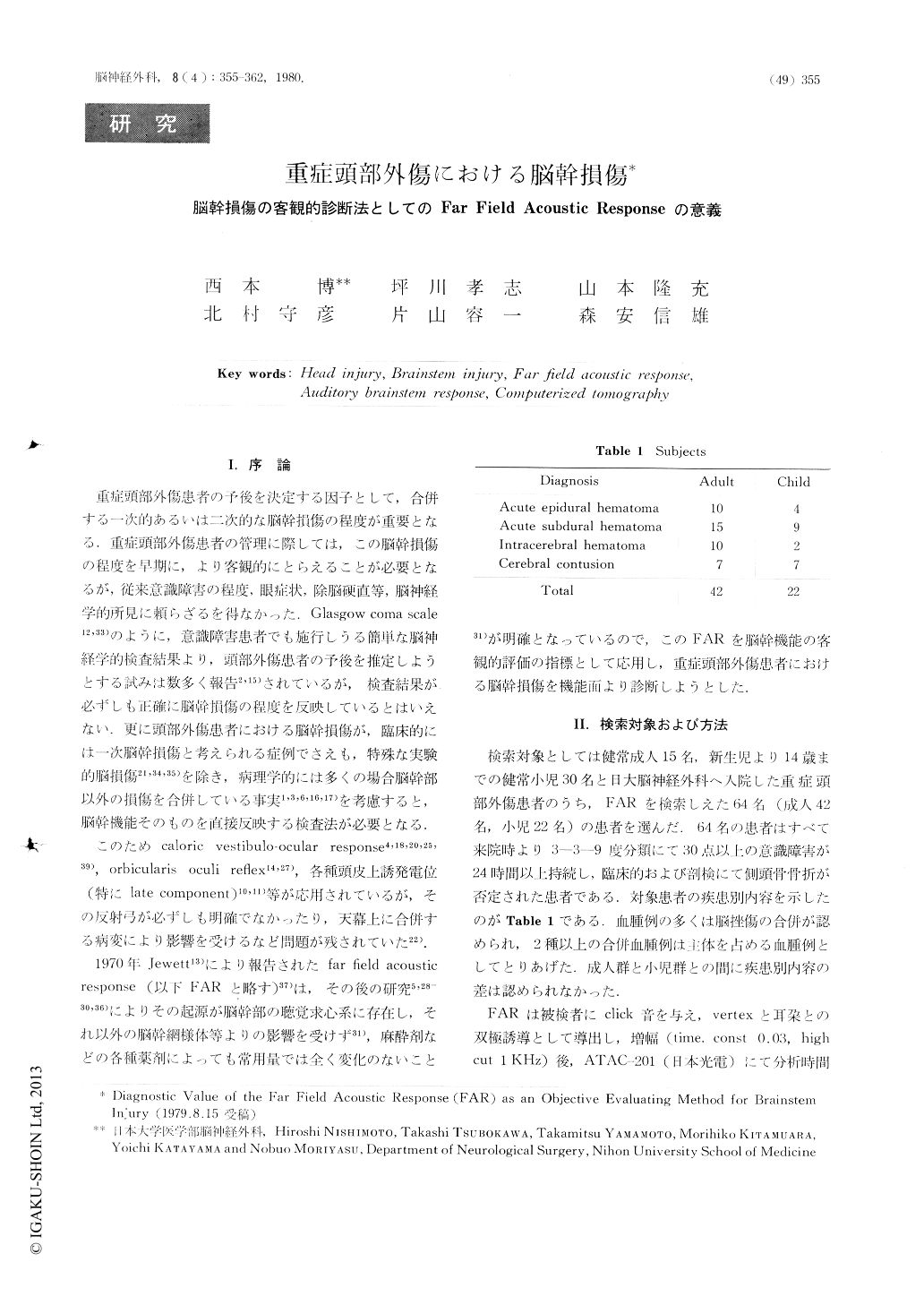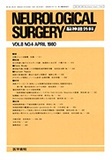Japanese
English
- 有料閲覧
- Abstract 文献概要
- 1ページ目 Look Inside
Ⅰ.序論
重症頭部外傷患者の予後を決定する因子として,合併する一次的あるいは二次的な脳幹損傷の程度が重要となる.重症頭部外傷患者の管理に際しては,この脳幹損傷の程度を早期に,より客観的にとらえることが必要となるが,従来意識障害の程度,眼症状,除脳硬直等,脳神経学的所見に頼らざるを得なかった.Glasgow coma scale12,133)のように,意識障害患者でも施行しうる簡単な脳神経学的検査結果より,頭部外傷患者の予後を推定しようとする試みは数多く報告2間されているが,検査結果が必ずしも正確に脳幹損傷の程度を反映しているとはいえない.更に頭部外傷患者における脳幹損傷が,臨床的には一次脳幹損傷と考えられる症例でさえも,特殊な実験的脳損傷21,34,35)を除き,病理学的には多くの場合脳幹部以外の損傷を合併している事実1,3,6,16,17)を考慮すると,脳幹機能そのものを直接反映する検査法が必要となる.
このためcaloric vestibulo-ocular response4,18,20,25,39),orbicularis oculi reflex14,27),各種頭皮上誘発電位(特にlate component)10,11)等が応用されているが,その反射弓が必ずしも明確でなかったり,天幕上に合併する病変により影響を受けるなど問題が残されていた22).
Far Field Acoustic Response (FAR) was repeatedly studied from acute stage to chronic stage of severe head injury in 64 patients for evaluation of the degree of brainstem injury.
(1) In acute stage within 7 days after trauma, FAR abnormalities are found in 56% of the subjects with severe head injury. These abnormalities are as follows: (i) Prolongation of latency, disappearance of the 5th wave. (ii) Disappearance of the 1st -5th waves or 2nd -5th waves. The incidence of FAR abnormalities is not correlated to disease categories and age of the subjects.

Copyright © 1980, Igaku-Shoin Ltd. All rights reserved.


